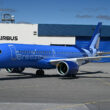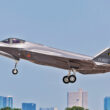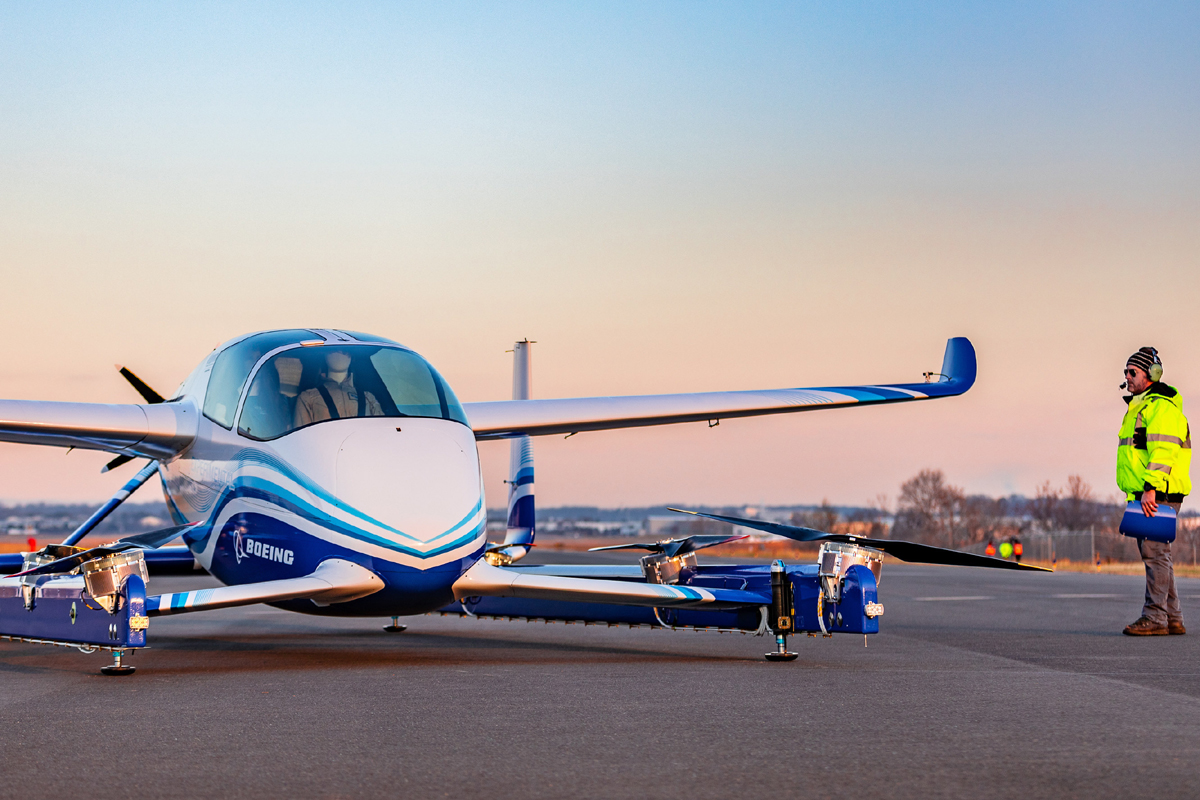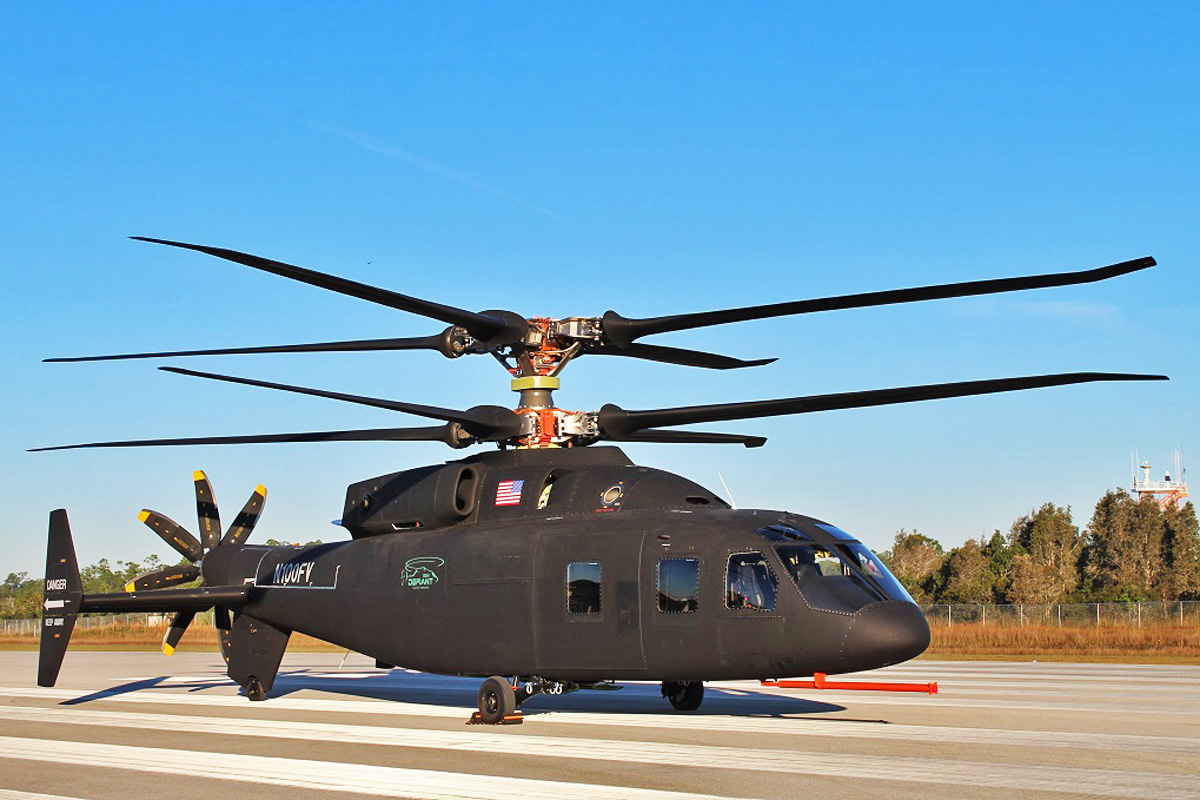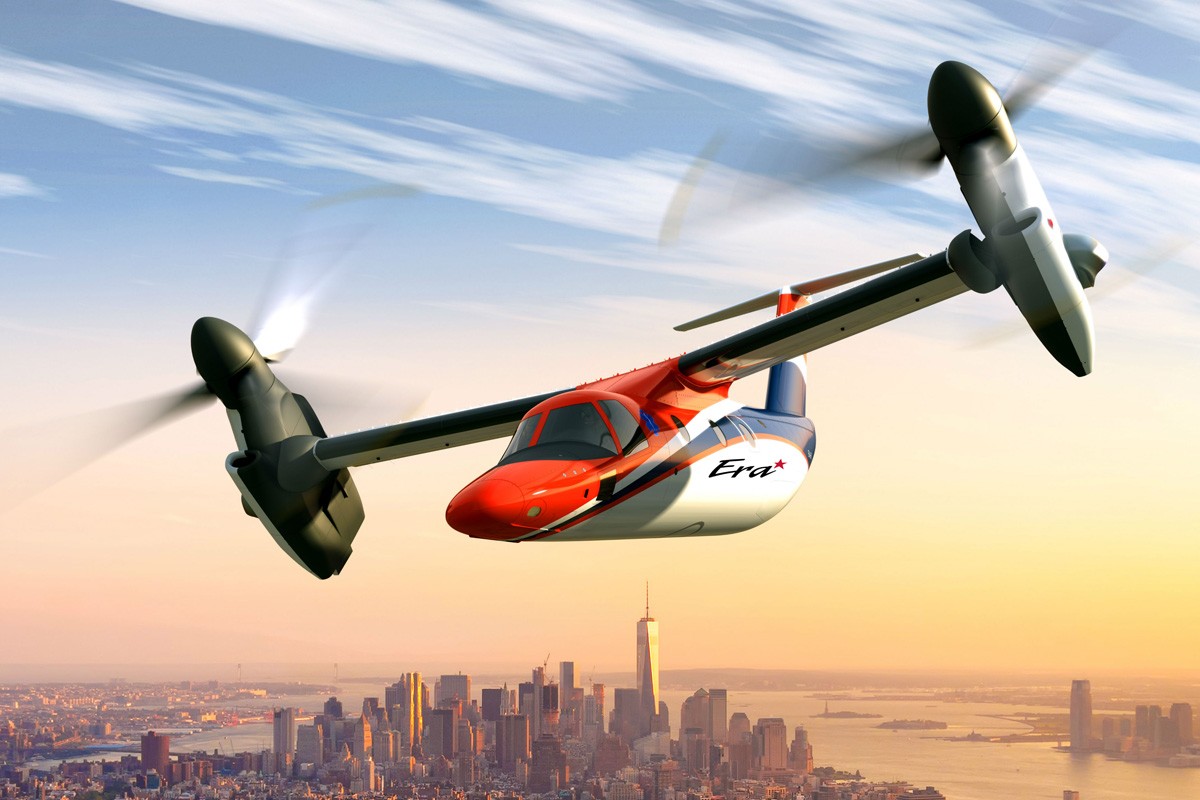The RACER, a new aircraft developed by Airbus, made headlines around the world this week for its “half plane, half helicopter” configuration, but it is a fact that the manufacturer’s project is not as revolutionary and original as it was made out to be.
The program began a long time ago, by the then Eurocopter, which flew the X³ prototype, a Dauphin helicopter with small wings and propellers at its tips, in September 2010.
The hybrid aircraft achieved the objective set by its manufacturer, which was to reach speeds around 50% higher than conventional helicopters, flying at 263 knots (487 km/h).
Follow Air Data News: WhatsApp | Google News | Instagram | LinkedIn | Twitter | Facebook

The next step of the project, called RACER (Rapid and Cost-Effective Rotorcraft), was to build a custom-made prototype to test the concept and in 2017 Airbus Helicopters announced the goal of carrying out the first flight in 2021.
The project was delayed and only in April did the aircraft take off for the first time. The Racer was built based on learnings from the X3 and gained a narrower fuselage to reduce aerodynamic drag, an asymmetrical tail boom and pusher propellers installed at the tips of the V-shaped wings.
As part of the European Clean Sky 2 program, the Racer’s goal, in addition to high speed, is to reduce CO2 emissions by 20%.

In the first sorties, the hybrid helicopter reached promising speeds of up to 176 knots (326 km/h). According to the development team, the aircraft should gradually increase its speed in addition to receiving aerodynamic improvements such as a fairing on its main rotor.
The speed sought by Airbus is 220 knots (407 km/h), which is expected to be achieved in this year.

Old idea
Despite the excitement about the Airbus project, the idea is not new. Several manufacturers have sought for decades to combine the advantage of vertical landing and takeoff of helicopters with a high cruising speed like that of an airplane.
The aircraft that came closest to this equation is the Bell/Boeing V-22 Osprey, a tilt-rotor, capable of using its pair of large diameter propellers for vertical operations and cruise flights.
Despite this, the tilt-rotor configuration has not spread to this day. Leonardo has been trying to certify and start production of the AW609, a small civil tilt-rotor, for several years.

Bell also returned to the concept with the V-280 Valor military aircraft, which will be operated by the US Army.
However, it is the American company Sikorsky that has tested a configuration similar to Airbus but even more advanced, the X-2, whose origins date back to the 70s.
At that time, the company created the S-69, a helicopter with advanced co-axial rotors and horizontal turbojet propulsion. From the experience, the X2 emerged in 2008, a similar aircraft, but with a propeller in the tail.
This concept evolved into coaxial rigid rotors that gave rise to the S-97 Raider, SB-1 Defiant and Raider X aircraft.

These prototypes reached speeds above 400 km/h and approaching 500 km/h in some cases, but the concept ended up not attracting interested parties yet.
The proposal for fast hybrid helicopters, however, faces economic and technical limitations related to combustion engines and rotors, which do not work properly at high speeds.
Furthermore, there is the evolution of other technologies such as eVTOLs, electric vertical landing and take-off aircraft.
For now, these pioneering projects do not yet see great speeds, but they should certainly evolve in this direction in the coming years.


